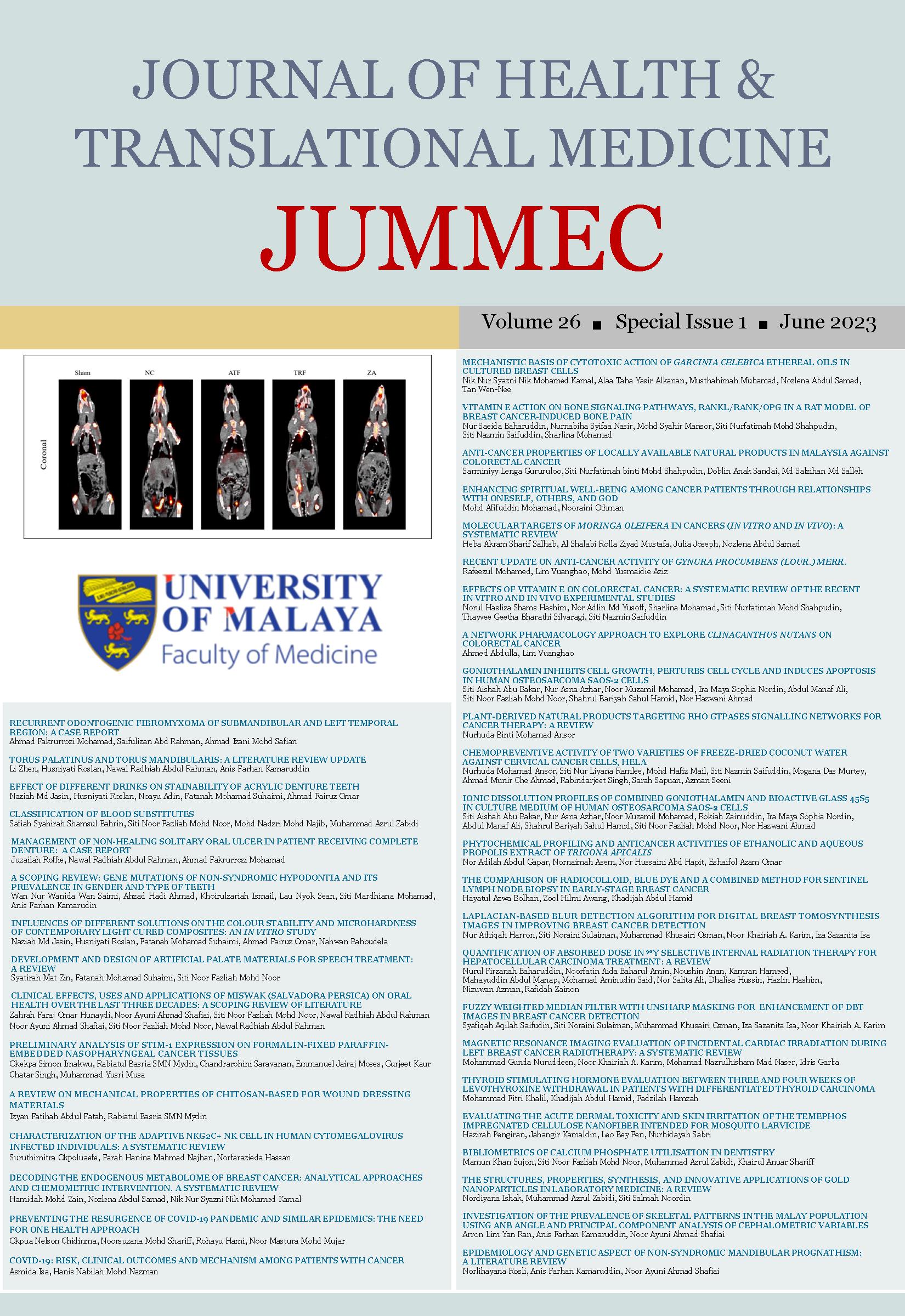VITAMIN E ACTION ON BONE SIGNALING PATHWAYS, RANKL/RANK/OPG IN A RAT MODEL OF BREAST CANCER-INDUCED BONE PAIN
Received 2023-01-12; Accepted 2023-03-15; Published 2023-06-06
DOI:
https://doi.org/10.22452/jummec.sp2023no1.2Abstract
Cancer-induced bone pain is currently facing inadequate pain management due to unwanted side effects and relative ineffectiveness. The search for alternative therapy to alleviate pain and target a few mechanism pathways might improve survival in metastatic patients. Vitamin E which has been promoted as anti-inflammatory, anti-cancer, and anti-metastatic were chosen in this study to potentiate its capability in a cancer-induced bone pain rat model. Rats were randomly grouped into five groups, and a breast cancer cell line was induced into the left femur of four groups: Negative Control (NC), Alpha Tocopherol (ATF), Tocotrienol Rich Fraction (TRF) and Zoledronic Acid (ZA), whereas Sham group as healthy subjects induced with supplementary media. Pain assessment tests were carried out at four days intervals. The animals were sacrificed after 21 days following SPECT/CT imaging. Bone specimens were analyzed for ELISA and gene expression studies. The results showed that the animal model was successfully validated via the presence of abnormal uptake of the skeletal system. Pain assessment tests demonstrated that vitamin E, specifically TRF significantly alleviate pain compared to the NC group. Biomarker activity illustrated that the TRF supplement group was able to regulate the bone turnover activity comparable to the ZA treatment group. Gene expression studies signify the role of TRF supplement comparable to the ZA group in the ability to regulate osteoclastogenesis, osteoclast activation, and regulating the secretion of metastatic cancer cytokine. This finding addressed the beneficial potency of TRF compared to ATF as a therapeutic option in the management of cancer-induced bone pain.
Downloads
Downloads
Published
Issue
Section
License
All authors agree that the article, if editorially accepted for publication, shall be licensed under the Creative Commons Attribution License 4.0 to allow others to freely access, copy and use research provided the author is correctly attributed, unless otherwise stated. All articles are available online without charge or other barriers to access. However, anyone wishing to reproduce large quantities of an article (250+) should inform the publisher. Any opinion expressed in the articles are those of the authors and do not reflect that of the University of Malaya, 50603 Kuala Lumpur, Malaysia.


